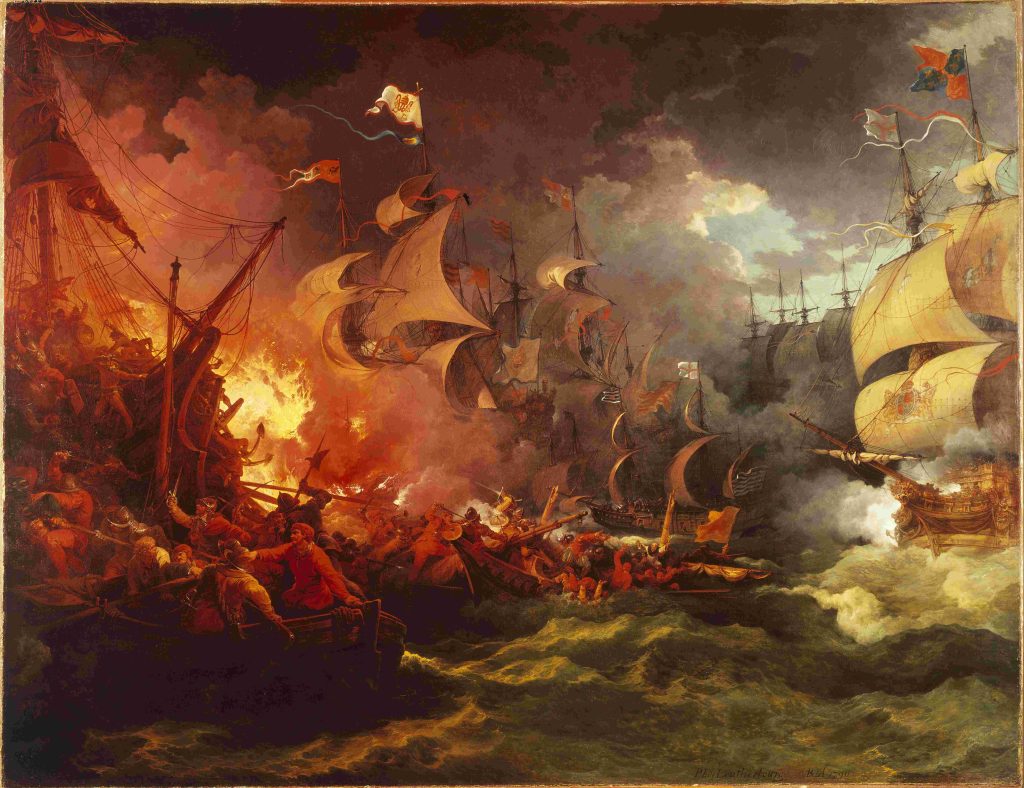The Secrets We Kept by Lara Prescott Reveals the Story Behind Doctor Zhivago
 One of the most highly anticipated historical novels to hit shelves this fall was Lara Prescott’s The Secrets We Kept (Hutchinson, September 2019). Selected for Reese Witherspoon’s Hello Sunshine Book Club for September 2019, the novel was also nominated as a Best Debut Novel in the 11th Annual Goodreads Choice Awards. The film and TV rights have already been optioned.
One of the most highly anticipated historical novels to hit shelves this fall was Lara Prescott’s The Secrets We Kept (Hutchinson, September 2019). Selected for Reese Witherspoon’s Hello Sunshine Book Club for September 2019, the novel was also nominated as a Best Debut Novel in the 11th Annual Goodreads Choice Awards. The film and TV rights have already been optioned.
Prescott’s novel reveals the intriguing true-life espionage plot behind Boris Pasternak’s beloved novel, Doctor Zhivago. Set mainly in the US and the USSR in the 1950s, the two main protagonists in The Secrets We Kept are Sally Forrester and Irina Drozdov. Both women work as typists in the male-dominated CIA, but they are actually spies. Sally, the veteran spy, trains Irina and their mission is to first smuggle Boris Pasternak’s Doctor Zhivago out of the USSR in order to publish it and then they must disseminate banned copies of Doctor Zhivago to Soviet citizens. The goal of this mission is to make people in the USSR question their government and expose the realities of communist life. The other half of The Secrets We Kept is told from the perspective of Boris Pasternak and his lover Olga Ivinskaya, the inspiration behind the character of Lara in Doctor Zhivago.
While Sally and Irina are fictional characters, the covert spycraft behind Doctor Zhivago is entirely factual. The true-life back story of Doctor Zhivago first came to light in 2014, when 130 documents and declassified CIA files were released, exposing the CIA “Books Program” of the Cold War era. Up until that point, not many people knew about the story behind Doctor Zhivago and that the CIA viewed books as weapons during the Cold War, utilizing banned books to fight the Soviets and their propaganda.[1]
Lara Prescott first learned about the history behind Doctor Zhivago in 2014 when her father sent her a Washington Post article about these declassified CIA documents. Intrigued and wanting to know more, Prescott started to do some digging of her own and she says, “What I discovered was that the CIA had obtained the banned manuscript, covertly printed it, and smuggled it back into the USSR.” As she read the declassified files, she found them full of redacted names and details and she thought this was the perfect opportunity for her to write a novel that would fill in these gaps.
Prescott’s research methodology subscribes to the thought: “Read a hundred books, write one.” When she decided to write a novel about the CIA and Doctor Zhivago, she devoured books on “the Cold War, propaganda, CIA history, the lavender scare, Russian history, Boris Pasternak, and much more.” In addition, Prescott traveled to Russia while she was in the middle of writing her first draft. She says that “it is one thing to read about the history, but it is another to explore the same Moscow streets, walk the same village paths, see what Boris and Olga saw sixty years ago.”
Boris Pasternak, a Russian poet and writer, completed his magnum opus, Doctor Zhivago, in 1956. Semi-autobiographical, the epic tells the story of Yuri Zhivago, a doctor and a poet, and the effects of the Russian Revolution of 1917 on Zhivago and his middle-class family. Because he is an artistic man, Yuri Zhivago is especially vulnerable to the harshness of the Bolshevik government. Stretching from the October Revolution to World War II, Pasternak’s novel exposes the reality of life in Russia in the first half of the 20th century, not the Soviet government’s propagandistic version.
Pasternak wrote his novel completely cognizant of the problems it would create for him, especially with the government. But Pasternak refused to kowtow to the Soviet government and would not shy away from the truth of what life was like in the Soviet Union after the Russian Revolution. Because of Pasternak’s unflinching view of the USSR and his refusal to change anything in the novel, the Soviet government refused to publish Doctor Zhivago. In fact, the book was not published in the USSR until 1987.[2]

author Lara Prescott
But in 1956, a publisher from Milan got a copy of Doctor Zhivago and Boris Pasternak signed a book deal. The Russian government did everything they could to halt the publication of this subversive book, but to no avail, and an Italian translation of Doctor Zhivago was published in 1957. Once published, the CIA recognized why the Soviet Union hated Pasternak’s novel – and the CIA decided to use the book as a weapon. In short, “Pasternak’s humanistic message – that every person is entitled to a private life and deserves respect as a human being, irrespective of the extent of his political loyalty or contribution to the state – poses a fundamental challenge to the Soviet ethic sacrifice to the Communist system.”[3] If the CIA could get smuggled copies to Soviet citizens, perhaps this would open their eyes to what is wrong in their government and maybe that would eventually facilitate change in the USSR.
One of the main locations for the dissemination of copies of Doctor Zhivago was at the 1958 World’s Fair in Brussels, an event that Prescott highlights in The Secrets We Kept. Many Soviets were issued travel visas to go to the Brussels Universal and International Exposition, and as such, it provided ample opportunity for the CIA to covertly distribute copies. The CIA also distributed copies in other Western European cities. Later, miniature versions of Doctor Zhivago were disseminated.[4]
The Secrets We Kept is a timely book for the 21st century as the world in which we live still has oppressive regimes. Doctor Zhivago was smuggled into the Soviet Union to awaken citizens and Lara Prescott says she would sneak in “Adam Johnson’s The Orphan Master’s Son into North Korea, Liao Yiwu’s Interviews with People from the Bottom Rung of Society into China, and while not a book exactly, I’d smuggle a copy of the U.S. Constitution into the White House.”
In The Secrets We Kept, the reader witnesses that words and art have the power to change minds and save the world. Art is powerful and transformative. Prescott says that “through books, one can step into the shoes of someone completely different from oneself. It is almost a radical exercise in empathy. Books are still being challenged and banned today because those in power don’t want people to make those very connections.” The pen truly is mightier than the sword.
[1] Peter Finn and Petra Couvée, The Zhivago Affair: The Kremlin, the CIA, and the Battle over a Forbidden Book (UK: Harvill Secker, 2014).
[2] Peter Finn and Petra Couvée, “During Cold War, CIA used ‘Doctor Zhivago’ as a tool to undermine Soviet government,” The Washington Post, last accessed November 1, 2019, https://www.washingtonpost.com/world/national-security/during-cold-war-cia-used-doctor-zhivago-as-a-tool-to-undermine-soviet-union/2014/04/05/2ef3d9c6-b9ee-11e3-9a05-c739f29ccb08_story.html
[3] Peter Finn and Petra Couvée, “During Cold War, CIA used ‘Doctor Zhivago’ as a tool to undermine Soviet government,” The Washington Post, last accessed November 1, 2019, https://www.washingtonpost.com/world/national-security/during-cold-war-cia-used-doctor-zhivago-as-a-tool-to-undermine-soviet-union/2014/04/05/2ef3d9c6-b9ee-11e3-9a05-c739f29ccb08_story.html
[4] Sarah Pruitt, “CIA used Dr. Zhivago as Cold War weapon,” History, accessed November 1, 2019, https://www.history.com/news/cia-used-dr-zhivago-as-cold-war-weapon






